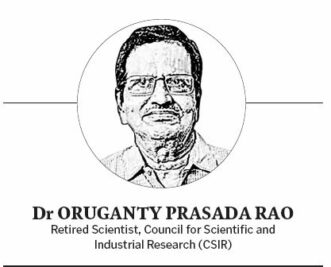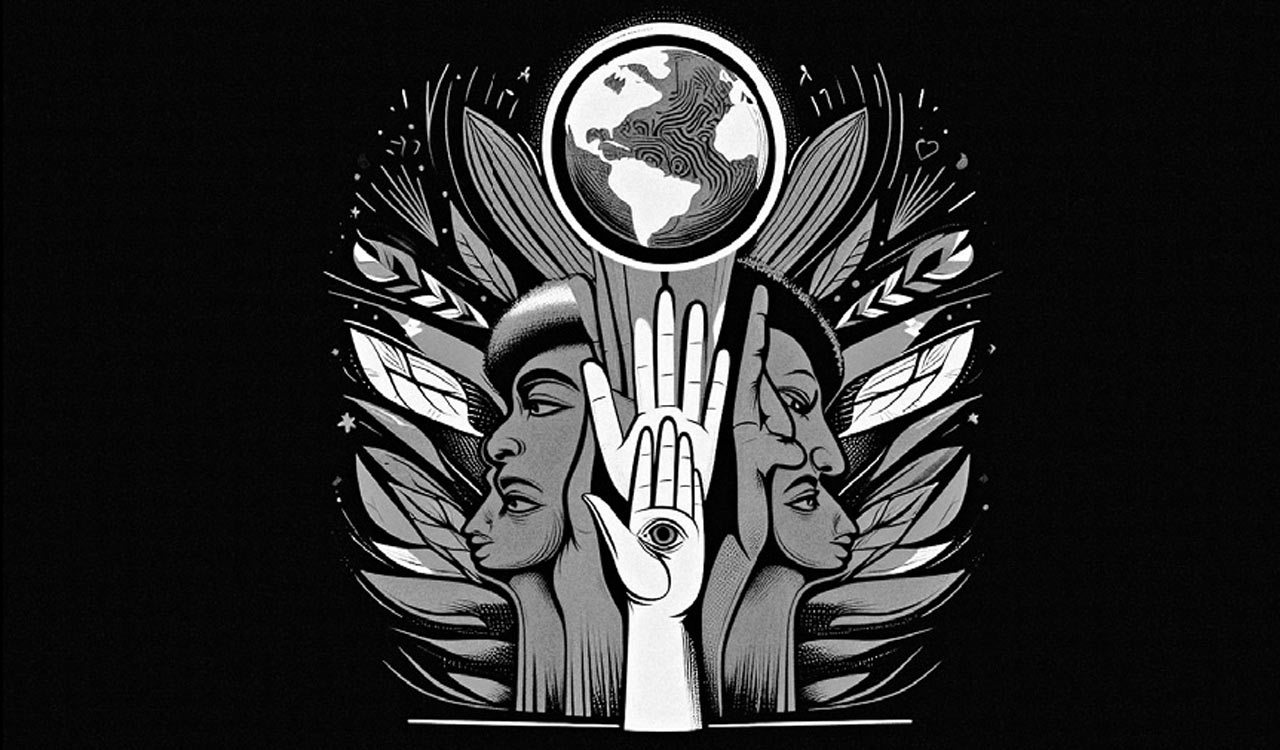There is a need for more dialogue, trust, cooperation and collaboration among countries to achieve the theme of G20
Published Date – 11:30 PM, Fri – 13 October 23

By Dr Oruganty Prasada Rao
The theme of the recently concluded G20 Summit was ‘One Earth, One Family, One Future’, which translates in Sanskrit to ‘Vasudhaiva Kutumbakam’, derived from Maha Upanishad. It emphasises unity and global cooperation to address the challenges facing humanity and our planet to create a sustainable and pleasant future for all.
The Food and Agricultural Organization (FAO) projected that the global arable land area could decrease to 0.2 hectares per person by 2050 from 1.4 hectares in 1960. The Guardian states that the Earth has lost a third of arable land in the last 40-50 years. The loss was due to a combination of factors such as urbanisation, climate change, sea level rise and deforestation.
Grim Picture
According to a United Nations report, the number of people affected by hunger globally was 828 million in 2021. Around 2.3 billion people were moderately or severely food insecure in 2021. An estimated 45 million and 149 million children under the age of 5 were suffering from wasting and stunted growth, respectively, due to malnutrition.
Water scarcity is a growing problem worldwide with poorer communities most affected. According to the United Nations, 2.3 billion people live in water-stressed countries. About 4 billion people experience severe water scarcity during at least one month of the year. The problem increases as the global population increases and climate change becomes more severe.
The World Economic Forum estimates that more than 1.8 billion people live in informal settlements lacking essential services of drinking water, electricity and sanitation. As per the World Health Organisation, one billion people live in slums. In developing countries, one-third of urban residents live in slums. The United Nations Human Settlements Programme (UN-Habitat) estimates that by 2030, about 3 billion people or 40% of the world’s population will need access to adequate housing.
The average per capita energy consumption is 100 times higher for rich than poor countries. Energy is another basic need and a lifeline for the growth and survival of human beings. Seven countries have 100% and ten have 30-40% literacy rates. There is a relationship between literacy and poverty as low literacy levels can perpetuate poverty by limiting access to education, employment opportunities, and also social mobility, and health and fitness.
Education helps in breaking down barriers and enabling intercultural understanding. Cultural exchanges, collaboration and in times of crises, such as earthquakes, floods and droughts, extending support in cash and kind and assistance can promote mutual appreciation and trust.
Combating Climate
Even hardcore critics, scientists and the general public agree that the Earth’s climate is changing, evidence being the extreme weather events of drought, floods, unseasonal rains, more intense heat waves and wildfires, rising sea levels, etc. Solutions to climate change include mitigation and adaptation measures. Mitigation depends upon reducing the carbon footprint that involves cutting down the emission of greenhouse gases, more so carbon dioxide, that is emitted by human activity, a product in its manufacture, a company in its business and a country in different sectors.
The Paris Agreement advocated for limiting the rise in global average temperature to well below 2 degrees Celsius preferably 1.5 degrees Celsius above pre-industrial levels. Regrettably, nothing concrete has happened on this front, except submission of Nationally Determined Contribution (NDC) by 154 out of 196 countries. The reasons are delays in fulfilling the pledge of $100 billion in financial assistance made by rich countries to poor counterparts, lack of seriousness among the advanced countries, which are the major polluters, and technological and financial inabilities of poor countries.
Considering the present efforts being made globally, limiting the rise in global temperature below 1.5 degrees Celsius is out of the question, even 2 degrees Celsius looks bleak. So, adaptation measures become inevitable. They include building resilient infrastructure, improving disaster management, particularly relocating large size of populations quickly, restoring and conserving natural ecosystems and biodiversity, promoting sustainable agriculture and water management, enhancing social security and healthcare facilities and effective and widespread warning systems to caution people in advance.
The LiFE concept for mitigation of climate change is a phrase that stands for Lifestyle for Environment. It includes replacing fossil fuels with renewable energy sources, using public transport, cycling or walking instead of driving, energy conservation at home and workplace, and supporting green products and businesses.
The energy sector is the largest contributor to greenhouse gas emissions, accounting for over 70% of total emissions, followed by agriculture 20% and industry and waste sectors 8%. Substituting coal by natural gas and adopting clean coal technologies incorporating carbon capture and fully exploiting renewable energy sources can significantly reduce greenhouse gas emissions from the power sector. Battery and hydrogen-based fuel cell-driven electrical vehicles reduce emissions on the road. Using electricity as an energy source reduces emissions from the industry sector. Further, increasing efficiency of energy use reduces emissions in all sectors
Global Goals
We have a plethora of international and regional organisations such as the United Nations General Assembly (UNGA), United Nations Security Council (UNSC), World Trade Organization, International Panel on Climate Change, World Health Organisation, World Bank and the International Monetary Fund, G7 and G20 countries, BRICS, SCO, and Quad to take care of peace, security, human rights and dignity, political conflicts, trade, economic development, health problems, climate change etc.
They are required to play a major role as per the mandate assigned to each of them in ensuring a better future for all.
According to the Council on Foreign Relations, there are currently 27 ongoing conflicts worldwide which include the Ukraine war, the Israel-Palestinian conflict, civil wars, the India-China border dispute, the China-Taiwan territorial conflict and the Kashmir issue. The UNGA, UNSC etc can resolve them.
Unethical zeal or obsessive enthusiasm or devotion to a religion by some people or groups is leading to the killing of innocent people and security personnel, damage to religious places and burning of religious books etc. Deradicalise extremists by counselling and education, creating awareness and providing socioeconomic support to bring them back to mainstream.
Talk More
There is a need for more dialogue, trust, cooperation and collaboration among countries. Reduce the disparities in income, wealth, health, education, opportunities and availability of basic needs that are growing among the countries. Inclusive and equitable policies are required that ensure everyone can benefit from global progress.
The world is facing an existential threat from the impacts of a changing climate and the loss of biodiversity and natural resources. This calls for seriously implementing the Paris Agreement, particularly by the major polluting countries apart from providing financial and technological support to poorer nations.
Digital technologies such as computers and the internet play a vital role in shaping the future of the world. But there is a lot of disparity among the countries. This can be reduced by providing accessible and affordable digital infrastructure, and promoting digital literacy and skills.






